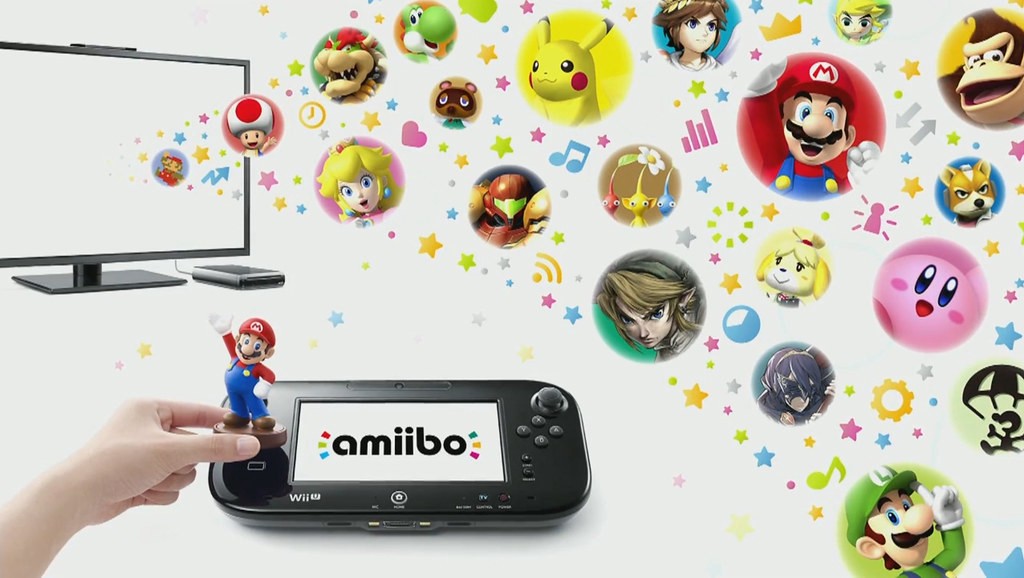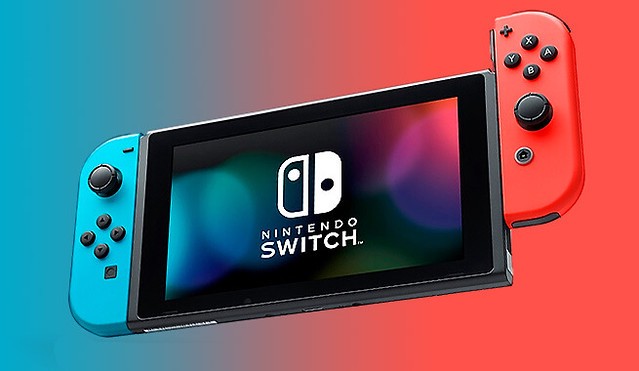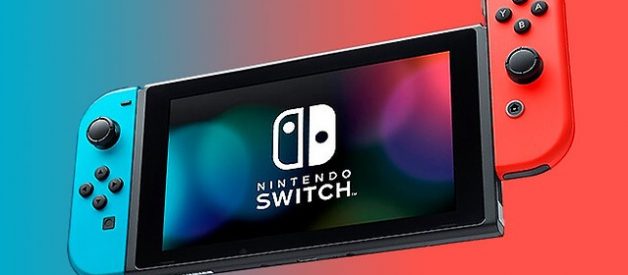It seems Nintendo has had its share of ups and downs this decade. The company began the decade riding high on the success of the Wii. This console proved to be a great success for Nintendo. Not just in terms of sale, but is also innovated with its inclusion of motion control during its launch. After half a decade on the market, it was natural for Nintendo to develop their next gaming console.
2012 introduced the world to the Wii U. This console would become Nintendo?s worst selling console aside from the Virtual Boy in the 90?s. This was a huge decline for a gaming console with decades of success and riding high on the success of the Wii. Going into the next generation of gaming, Nintendo was expected to continue their growth. Instead, they failed to connect with their customers and their sales saw a decline. A few things went wrong with the Wii U, and when these things are added together it becomes easier to understand why the Wii U decline from his predecessor.
The Hardware

Compared to the Wii, the Wii U console was nothing remarkable. Available in white at launch for the basic model, or a black unit for the more premium model, the actual console was fairly reminiscent to the Wii. While the console lacked a unique design like the Gamecube, the hardware design was not the issue.
The distinguishing factor for the Wii U was the controller. Known as the Gamepad, the controller housed a full 6.2 inch touchscreen and it could be used in addition to the TV output to display additional content. For most games, the Gamepad could be used off TV in lieu of TV output. This meant users could roam around their house and play the Wii U. However, the Gamepad had to be within 27.5 feet of the console itself to steam HD content. The device was wireless, but users couldn?t leave the house and play games without the Wii U console.
In essence, the Gamepad was akin to a tablet. It had a touchscreen and could be used wirelessly. This also demonstrates part of the problem with the Wii U. Where the Wii seemed to innovate with motion controls, the Wii U seemed to be competing with the rising tablets and smartphone market. This is where the Wii U begins to miss the mark. It doesn?t introduce new technology, nor does it take the safe route and focus on the games. Rather, it tries to force itself into an already competitive market.
The ?Wii U?
In 2006 Nintendo released the Wii. I admit I had no idea what the name meant. Time passed and the name became synonymous with the Nintendo brand. Still, I have no idea what Wii actually means and why it?s spelled with two i?s. The Nintendo 64 has 64-bit graphics, the Gamecube is a cube that plays games, the Switch can switch between handheld and console gaming. These names revolve around a feature of the console. The Wii? That?s just a word Nintendo made up.
Understanding the confusion of the Wii is essential to understand the confusion of the Wii U. The name did not signify a next generation console. Adding a ?U? to the end of the ?Wii? does not let the average customer know the console is Nintendo?s next generation. In fact, the console was often mistaken as an accessory or a peripheral for the Wii. Keep in mind, the Wii U was coming into the market during a time when other consoles were introducing add-on units. The Xbox Kinect was a popular item at the beginning of the 2010?s and the Playstation Move shared in this popularity. It seemed plausible that Nintendo could introduce their own add-on device.
Nothing about the Wii U?s name screamed ?must have.? The name left many customers with confusion and failed to highlight any features of the console. This name did not highlight the dual-screen capabilities like the Nintendo DS did, nor did it highlight the wireless gameplay away from the actual console. Rather, it was supposed to be a console for U. At least that?s what the advertising would have you believe.
The Wii U?s Audience
In the modern console gaming world, Nintendo almost falls into its own category. Its major competitors would be Microsoft?s Xbox and Sony?s Playstation. However, the real console wars are usually fought between Sony and Microsoft. They cater to more mature audiences and have more graphic-intensive games. Meanwhile, Nintendo caters to a family friendly audience and relies on first party games like Mario, Super Smash Bros, and Zelda. The Wii proved this type of console can exist in a modern gaming market. While Sony and Microsoft fans argue over which console is better, families will gravitate toward Nintendo and hardcore gamers will get a Nintendo as their secondary console.
The Wii U knew it didn?t have to fight against Xbox One and Play Station 4. Instead, it noticed the rise of smartphone and tablet gaming. This is the market Nintendo tried to compete with. At least that?s what it seemed like, given the touchscreen Gamepad designed to roam around the house.
Anyone who knows the tablet market knows a lot can change in a year. Your iPad options in 2012 varied greatly from your iPad options in 2014. The gaming market doesn?t evolve so quickly. The Wii came out in 2006 and remained Nintendo?s most current console for six years. Sure, there may be some tweaks to the appearance of their consoles, but the internals remained largely untouched until the Wii U. In this way, Nintendo can?t really compete with the rapidly evolving tablet market.
The Wii U wasn?t going to put a dent in the tablet market, and it wasn?t a huge factor in the video game market. So it was important for Nintendo to introduce compelling games and appeal to more niche demographics. With a system lacking its own identity, it felt like Nintendo was forcing itself into a market dominated by Microsoft and Sony consoles. The software would be its distinguishing factor, and the software has its own share of problems.
Wii U?s Games

When it came to the games, Nintendo launched the Wii U with a safe but satisfying title: New Super Mario Bros U. Mario is Nintendo?s mascot, so this move makes sense. It also launched with a number of other titles, mostly third party titles and ports from other systems. Unless customers were dying to play the New Super Mario Bros U, there was no real reason to rush out and grab a Wii U. Nintendo fans know this isn?t a first generation console and there?s more to come, but the waiting for new games highlighted one of the biggest challenges for the system.
Third party support for the Wii U was limited. Compared to the Xbox One and Playstation 4, the Wii U had worse graphics and less processing power. This meant developers would have to cater to the Wii U?s limitations when developing third party games. To add to this, developers were struggling to work with the Wii U?s developer kits and it seemed like Nintendo struggled to provide third party games with access to their online networks. These complications undoubtedly resulted in fewer third party developers supporting the Wii and and their catalogue shows this.
Then, there were gaming issues coming from Nintendo itself. In many ways it felt like Nintendo cared more about the performance of the 3DS portable console than the Wii U. After all, the 3DS had sold almost five times as many units as the Wii U by the time the Wii U ceased production. Just like the Wii U, the 3DS has its own editions of Nintendo franchises. It had its own Mario games and got Mario Kart 7 while the Wii U got Mario Kart 8. Perhaps the oddest move, Super Smash Bros (fourth generation) was available on both the Wii U and the 3DS. Nintendo wasn?t differentiating its consoles enough, and the 3DS has more titles available. It seemed like there was more reason to get a 3DS than a Wii U, and that?s before you consider the fact that the 3DS was fully portable, not faux portable like the Wii U.
The software should be the most compelling reason to purchase a console. When Nintendo limits the software selection on a console, they risk losing customers. This is especially true when the console has limited launch titles. Customers will wait for a big game such as Mario Kart or Smash Bros. When they see similar or equivalent games on other consoles, they begin the doubt the necessity of the Wii U.
The Cost of a Wii U
Nintendo is often regarded as a more family and cost friendly console. The Wii U reduced its cost effectiveness. The console retailed for $299 for a base model and $349 for the deluxe edition which quadrupled the base storage of 8 GB. This was $50 more than the starting price of $249 for the Wii and $100 more than the Gamecube?s starting price of $199. Still, the Wii U was $200 less than the Xbox One?s base model but only $100 less than the Playstation One?s base model.
When you start to add games and accessories into the mix, the Wii U starts to see its cost increase rapidly. Unlike consoles like the PS4 or Xbox One, the Wii U had a variety of controllers available. Many players wanted the Pro controller rather than the Gamepad, adding $50 to the cost.
With costs of a Nintendo console adding up, a limited library of games, and a variety of gaming consoles available, it was hard to justify the cost. Families could purchase a Wii and a Nintend 3DS for the cost of a Wii U. Xbox and Playstation owners didn?t need to shell out $400 just to get Super Smash Bros. With all of the issues surrounding the Wii U, the investment in the console didn?t have the same return as other consoles.
Eventually Nintendo would make the deluxe edition its base model, offering 32GB of storage for $299. This move did little to help sales, especially when you consider that other consoles were reducing costs around this time. By this point the damage was done and Nintendo wasn?t the budget-friendly company it once was.
Why Did the Wii U Really Fail?
Nintendo is a strong brand that?s internationally recognized. One issue probably isn?t doing to derail the company, but when they have a handful of issues they?re going to feel the damage.
The Wii U didn?t know its place in the market. It wasn?t portable, but it wasn?t a stationary console. It wasn?t super innovative, but it wasn?t the same hardware as before. It wasn?t inexpensive, but it wasn?t as expensive as the other consoles.
If you weren?t already invested in Nintendo?s lines of games, it offered you no reason to join the Nintendo fandom. Pretty much all of the big titles on the console were sequels to existing franchises. So, a kid who never played Mario before is less likely to want to start playing his games on the Wii U. More likely, the kid?s parents will be buying a tablet for all of its free games. Meanwhile, a young teenager may be turned off by the lack of third party support. That teen will probably graduate from a Wii to a Playstation 4 because it has Madden NFL 15 and Star Wars Battlefront after EA stopped making third-party Wii U game.
Looking at Nintendo?s history, the Wii U is a sizable failure. It missed the mark in many categories, including sales, hardware innovation and game development. It?s no surprise that Nintendo phased out the Wii U as it?s ?eighth gen? console and replaced it with the Switch.
Did Nintendo Recover?
Two years after the release of the Switch, it?s safe to say Nintendo has rebounded. The Switch has sold three times as many consoles in its first two years as the Wii U did during its five years as Nintendo?s main console. Sales of the Switch remain strong and the console has a growing library of games.

The Wii U?s failure required Nintendo to make a drastic move. The Switch earned its name because it can switch between a portable and docked home console. This console replaces both the Wii U and the 3DS. For the first time in nearly three decades, Nintendo doesn?t have separate lines of portable and home console gaming. This shifts all of their focus onto one console. Five years ago the Wii U may have been under-performing, but the 3DS was still a success.
For the consumer, the Switch was the right move. It gives flexibility: a feature customers want but isn?t offered by the competitors. It has also benefited from some of the Wii U?s failures. Mario Kart 8 Deluxe, a port of the Wii U game with some added features, is the highest selling Switch game so far. The console was also able to launch with The Legend of Zelda: Breath of the Wild, a game intended for the Wii U but delayed multiple times. At this point in time, almost all of important software for the Wii U is available on another system. This further proves Nintendo has left the Wii U in its rear-view and is entirely focused on the future of The Switch. After years of successes, the Wii U challenged Nintendo with a failure. The company will continue to try to move past the Wii U era, but it will always be a humbling time in Nintendo?s history.
Thank you for reading! I love studying design, user research, and new products. I?m not just on Medium! I can also be found on my website and LinkedIn.


